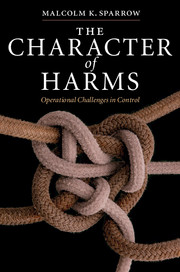12 - Performance-enhancing risks
from Part II - Special categories of harms
Published online by Cambridge University Press: 06 July 2010
Summary
Chapter 9 examined harms involving conscious opponents, where a brain lies behind the threat. This chapter, similarly highlights harms where control efforts confront a form of resistance within an organization, and where those interested in controlling the harms need to understand the genesis and nature of that resistance, lest they be surprised by it. The distinctive characteristic of performance-enhancing risks is that the motivation for risk-taking derives from an organization's performance goals, rather than from the personal agendas of individuals or groups. The motivations for risk-taking, therefore, have an organizational origin. Moreover, the resistance to control manifests itself in rather particular organizational behaviors.
Many of the more familiar examples of performance-enhancing risks involve unlawful behavior, and have been examined by criminologists and sociologists under the general heading of “unlawful organizational conduct.” Obvious examples include:
the use of torture or other proscribed interrogation methods in order to extract confessions or information from prisoners;
the payment of bribes by corporations in order to win contracts;
the use of steroids or other banned substances by professional sports team members;
aggressive, fraudulent, or abusive billing practices which enable a corporation to maximize profits;
neglect of safety procedures on construction sites as contractors rush to meet performance targets and project deadlines;
misrepresenting the financial condition of an organization in order to maintain confidence and drive up the stock price.
- Type
- Chapter
- Information
- The Character of HarmsOperational Challenges in Control, pp. 243 - 254Publisher: Cambridge University PressPrint publication year: 2008



